Abstract
Diapause (100% incidence) occurs in the moth Pectinophora gossypiella when it is exposed to 24-hour light/dark cycles involving 12 hours of red light (600 nm); only 2% occurs when the photoperiod is extended to 14 hours, again with 600-nm light. This wavelength fails to synchronize all the known circadian oscillations of the moth. These observations appear, therefore, to constitute positive evidence that the photoperiodic time measurement is not mediated by a circadian oscillation. However, it remains possible, even plausible, that the photoperiodic clock is a separate circadian oscillator coupled to light by a red-absorbing pigment. That possibility is testable. The nature of the clock—oscillator or not—remains open.
Full text
PDF
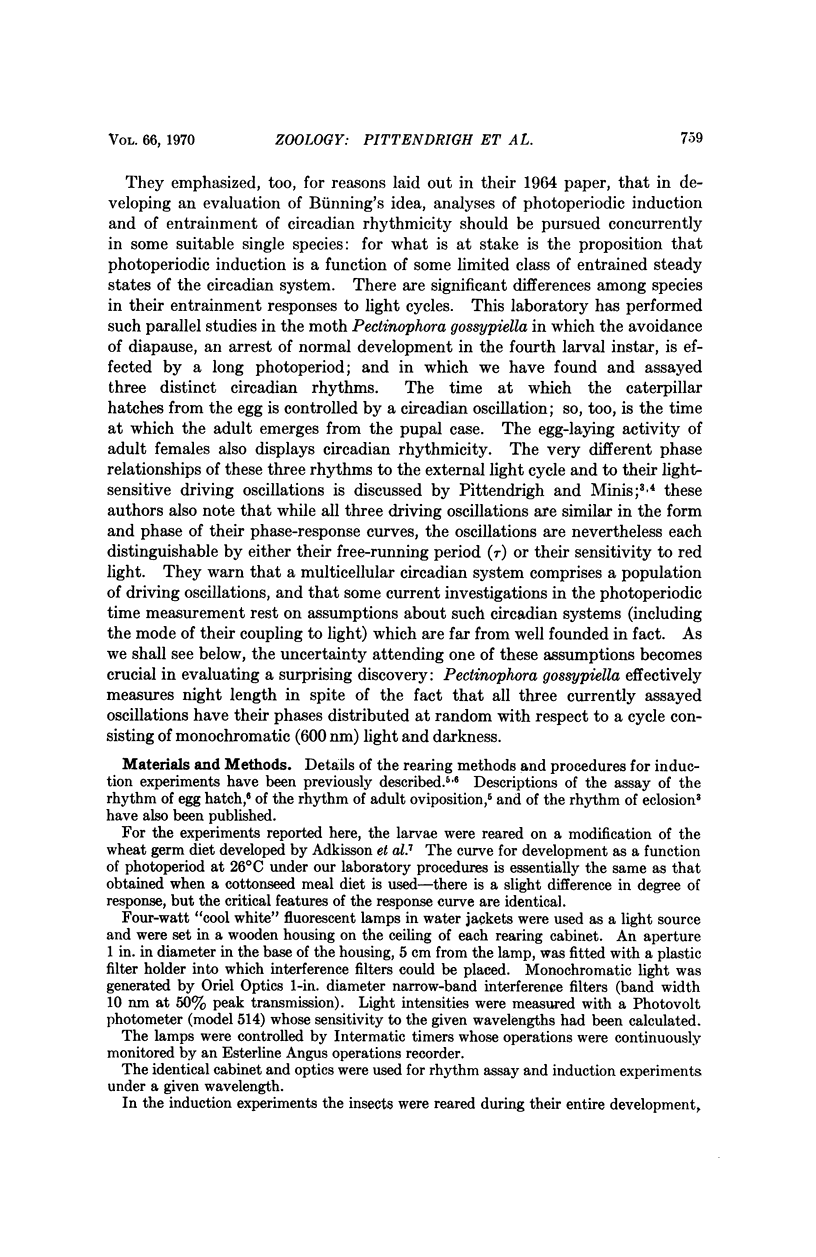
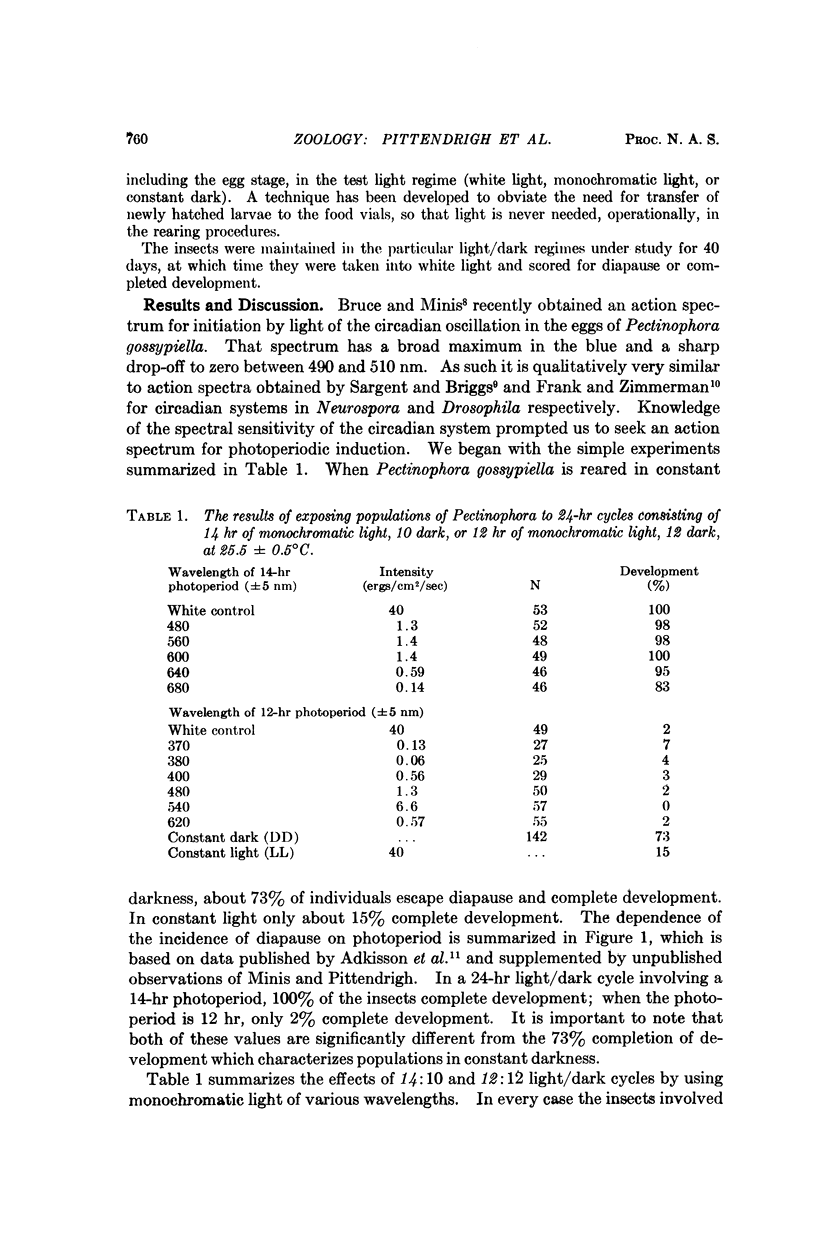
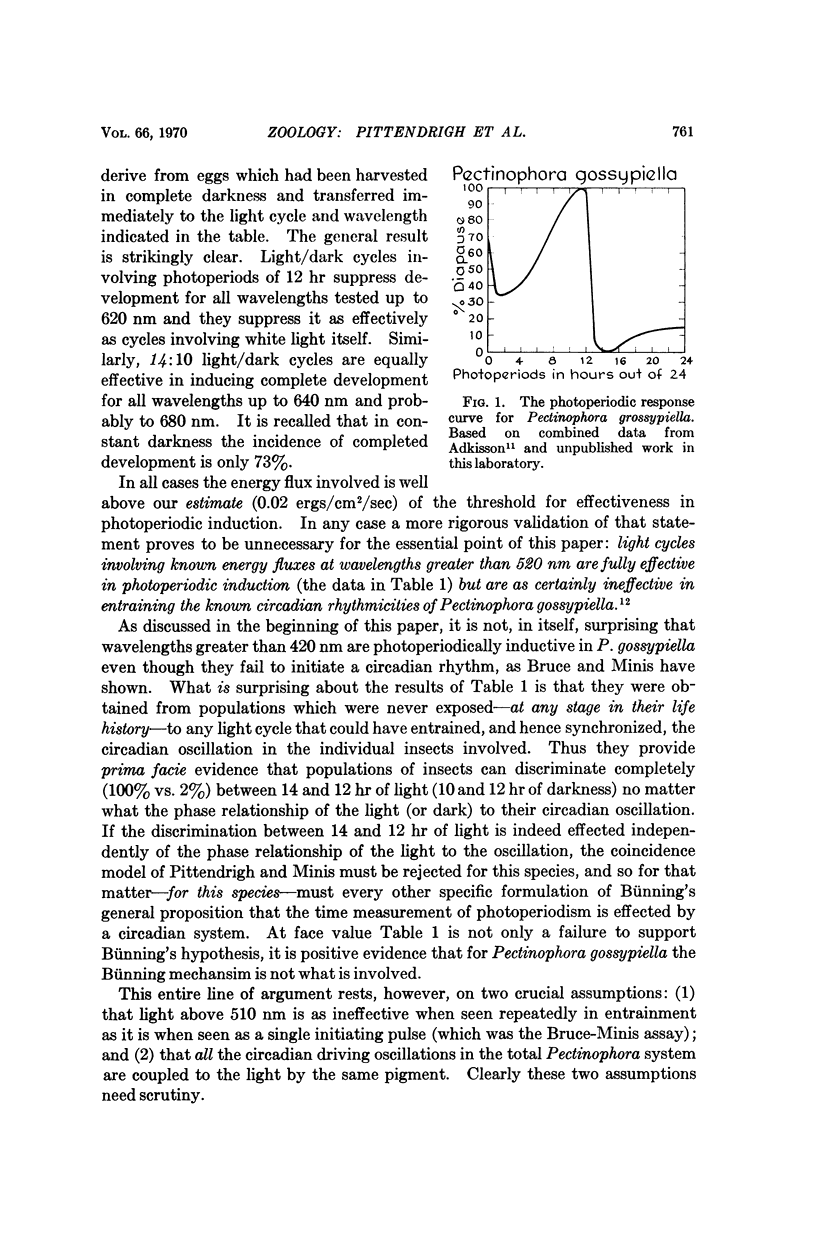
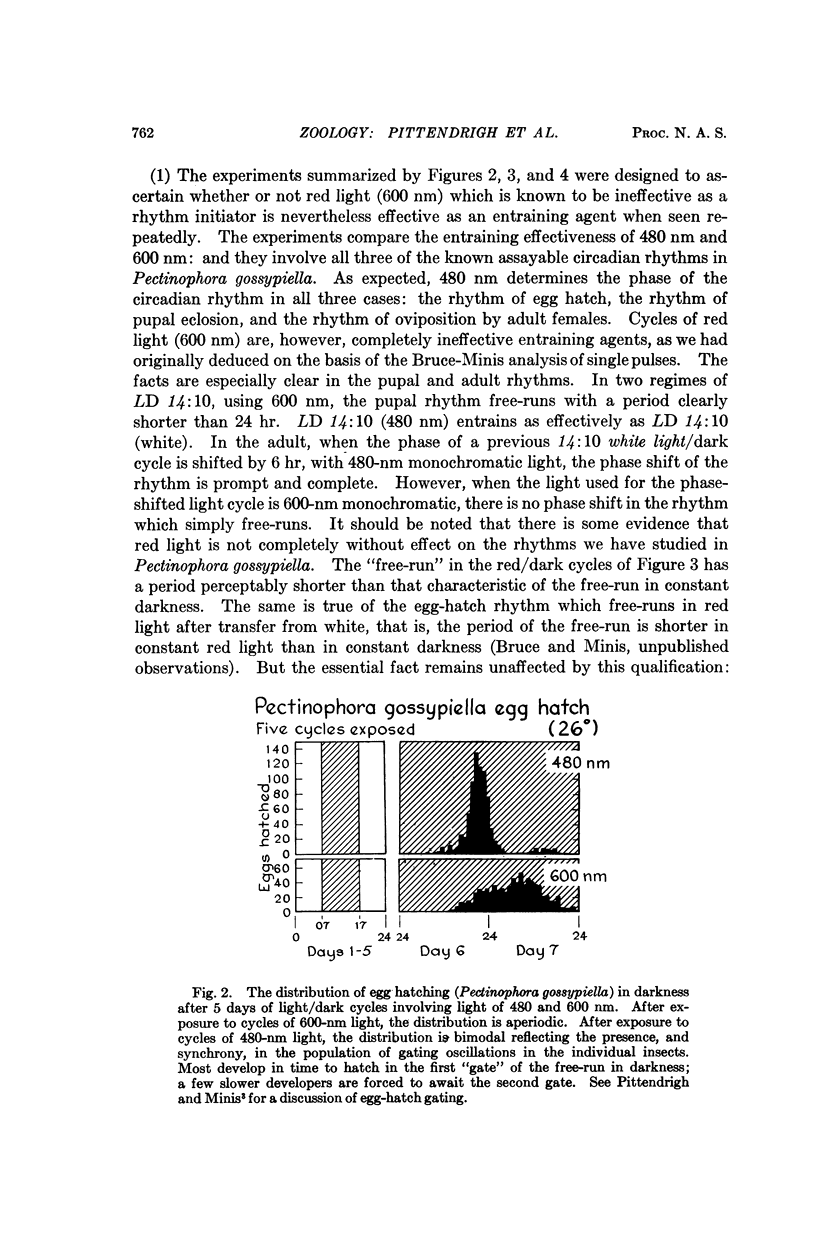
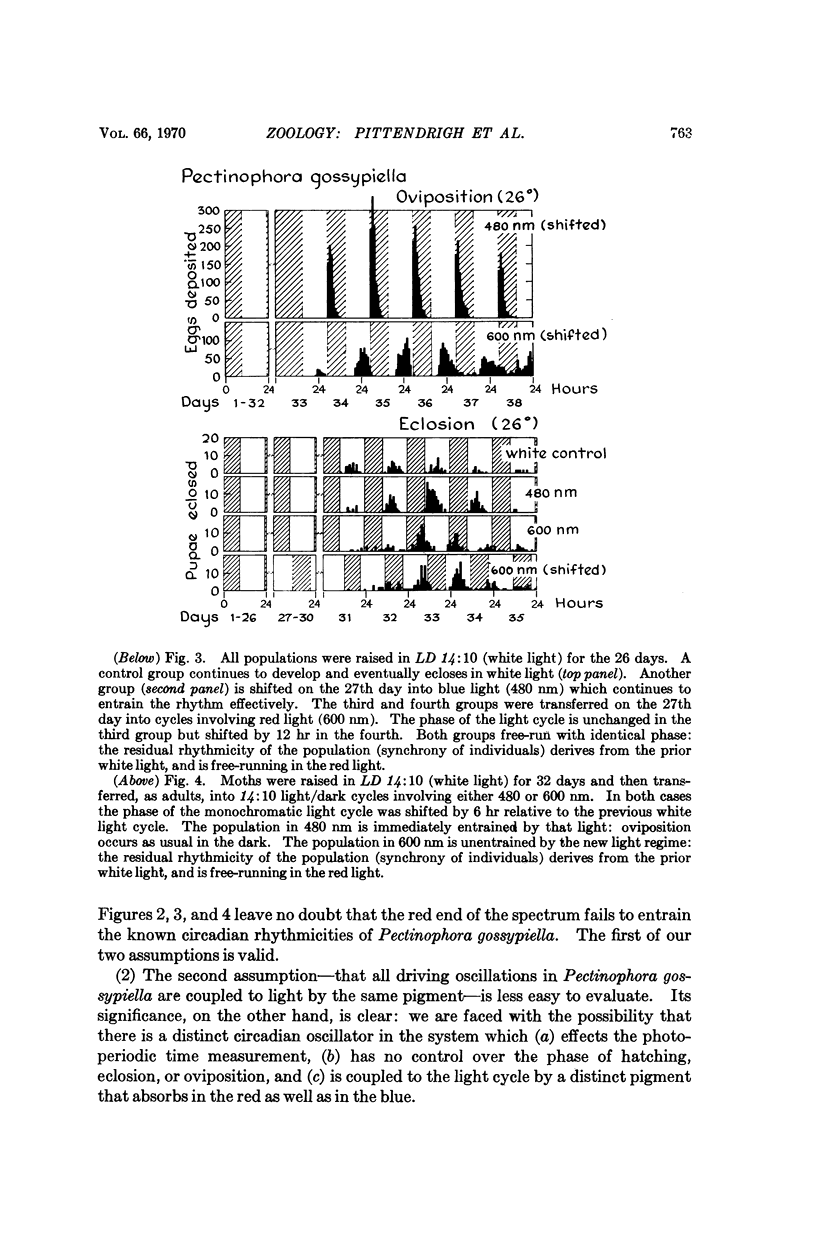
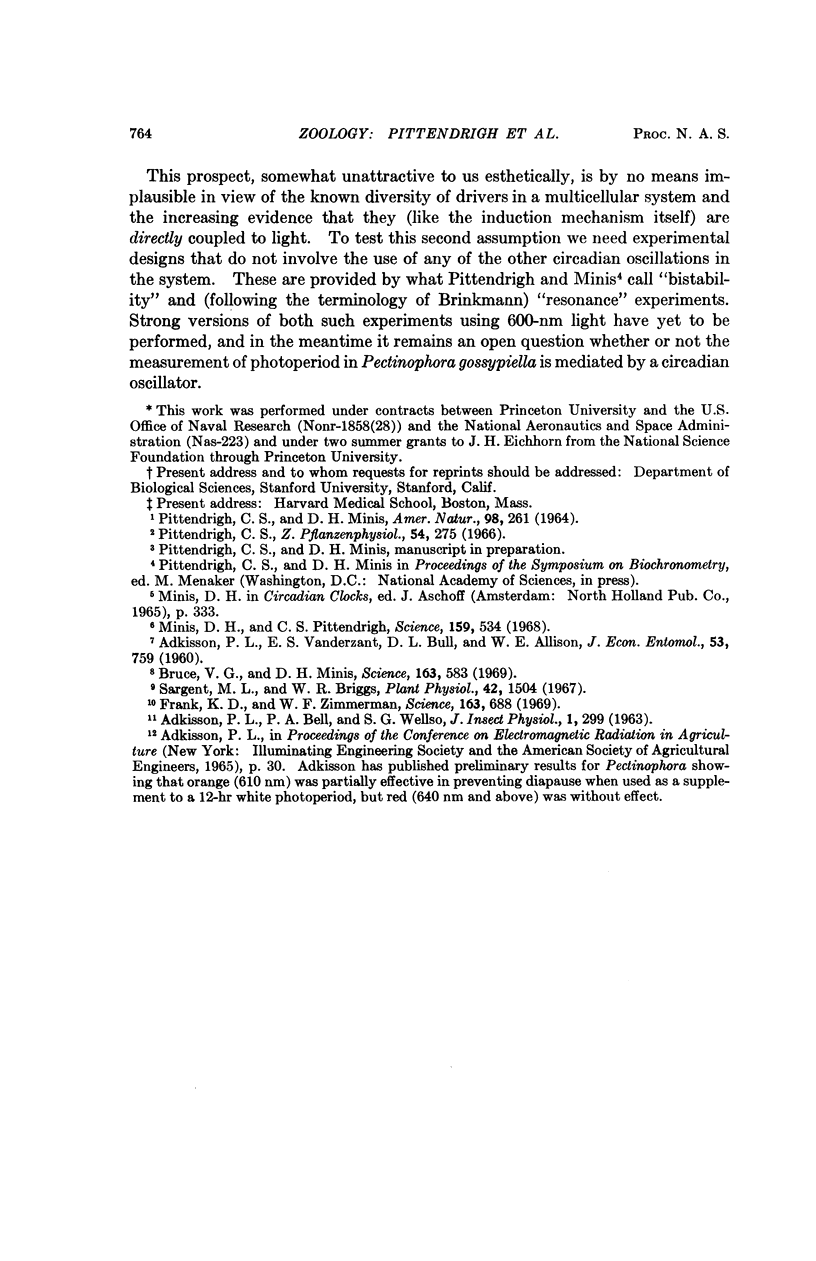
Selected References
These references are in PubMed. This may not be the complete list of references from this article.
- Bruce V. G., Minis D. H. Circadian clock action spectrum in a photoperiodic moth. Science. 1969 Feb 7;163(3867):583–585. doi: 10.1126/science.163.3867.583. [DOI] [PubMed] [Google Scholar]
- Frank K. D., Zimmerman W. F. Action spectra for phase shifts of a circadian rhythm in Drosophila. Science. 1969 Feb 14;163(3868):688–689. doi: 10.1126/science.163.3868.688. [DOI] [PubMed] [Google Scholar]
- Minis D. H., Pittendrigh C. S. Circadian oscillation controlling hatching: its ontogeny during embryogenesis of a moth. Science. 1968 Feb 2;159(3814):534–536. doi: 10.1126/science.159.3814.534. [DOI] [PubMed] [Google Scholar]
- Sargent M. L., Briggs W. R. The effects of light on a circadian rhythm of conidiation in neurospora. Plant Physiol. 1967 Nov;42(11):1504–1510. doi: 10.1104/pp.42.11.1504. [DOI] [PMC free article] [PubMed] [Google Scholar]


